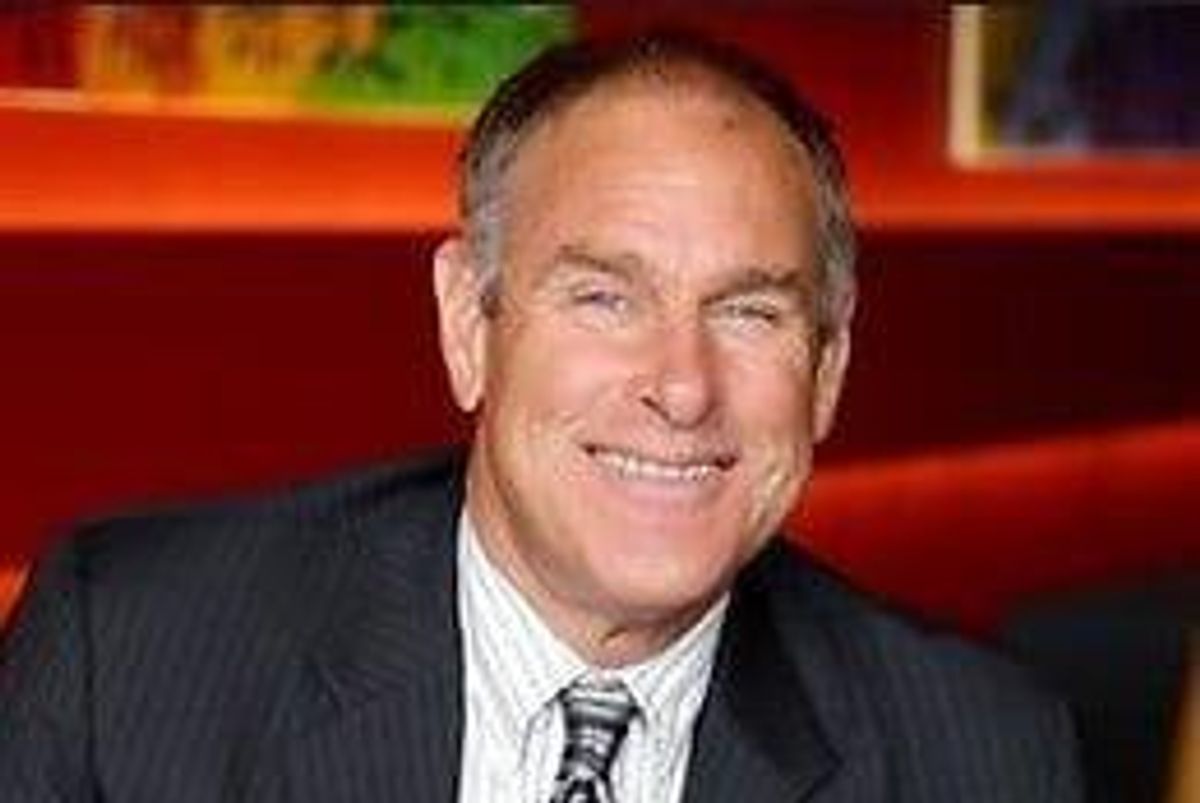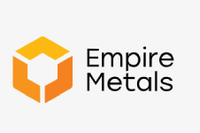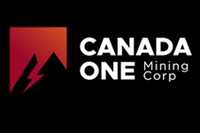Rick Rule on the Future of the Junior Resource Market

Sprott US Holdings’ President and CEO, Rick Rule talks about the junior resource sector in 2016 and the year ahead, particularly on precious metals, copper, lithium and uranium.
2016 is defined by big news such as the United Kingdom leaving the European Union after 43 years, Donald Trump voted 45th US President, and the US Federal Reserve holding short-term interest rates unchanged — all of which affected investors. INN spoke to Sprott US Holdings’ President and CEO, Rick Rule, and we asked about his thoughts on the junior resource sector in 2016 and the year ahead, particularly on precious metals, copper, lithium and uranium.
Here are some highlights of our conversation:
- On the recovery of the junior resource market in 2016: “The speed of the recovery, I think, had more to do with the oversold nature of the sector and how small the aggregate market cap was. In other words, it didn’t take a lot of money to move the sector.”
- Rick Rule’s thoughts on 2017: “If the resource sector that you’re referring to is primarily precious metals, I think the direction is a little lower first because there’s a lot of confidence in the economy, and then much higher.”
- On the surge in copper prices: “But the truth is, with regards to copper and coal, I think it’s a false rally.”
- On the restoration of Japanese demand and its effect on uranium prices: “We are beginning the process of supply destruction as we speak. The question is, when will the Japanese restarts take place?”
- On lithium: “If you are talented enough to trade the impact of a narrative on a market, these miner boomlets can always work for you.”
Listen to the interview, or read the full transcript below, for more of what Rule had to say. The transcript has been edited for clarity and brevity.
Investing News Network: Coming into 2016, what were your thoughts on the junior resource sector?
Rick Rule: It was pretty clear to us in 2015 that the sector was well oversold. We didn’t know where or when the market would respond. But it’s worthy to note, looking back in terms of that question, that the junior resource sector measured by the TSXV fell by 50 percent and then fell by 50 percent and, for good measure, fell by 50 percent again. The market was down by 90 percent and the truth is, assuming that there was on-going demand for stuff in the world, the market would recover at some point in time. We believe that to be inevitable. We didn’t realize, necessarily, that it was imminent.
INN: Were your predictions for 2016 correct? Did you see the recovery coming that quickly?
RR: My prediction in terms of direction was correct, my prediction in terms of the percentage gains that occurred as quickly as they did was certainly not correct. The idea that the index could recover a hundred percent in six or seven months seemed a fantasy that I could not aspire to.
INN: Was that the biggest news for the junior resource sector this year, the speed of that recovery?
RR: I think so, I think there were two pieces of news that were interesting. One we could have predicted, the other we couldn’t. The speed of the recovery, I think, had more to do with the oversold nature of the sector and how small the aggregate market cap was. In other words, it didn’t take a lot of money to move the sector. It’s just that there was no money in it. What surprised us and what was part of that was the extraordinary prices that were paid by the industry for high quality deposits. I’m thinking about Reservoir Minerals (TSXV:RMC) and Kaminak Gold (TSXV:KAM) in particular, there is a dearth of very good projects in the industry and the major mining companies paid a price for buying lousy projects in the last decade. The prices that were paid by smart buyers for high quality projects was a very welcome surprise this time.
INN: Looking forward now, we’re on the cusp of 2017, we’ve just had a major political election in the US, what are your thoughts for the resource sector in 2017?
RR: If the resource sector that you’re referring to is primarily precious metals, I think the direction is a little lower first because there’s a lot of confidence in the economy, and then much higher. I think, if you will, the fix — and I don’t mean a conspiratorial fix — I think the set of circumstances exists where an increase in the gold price, is pretty well baked in the cake.
INN: We spoke with David Morgan the Wednesday after the election and, as another very smart man, he said exactly the same thing.
RR: David has a very different discipline than mine and it’s very useful juxtaposing us. David is humble with regards to a special skill that he has and that skill is he’s a journalist like many newsletter writers. David is amazing at understanding the power of a narrative on a group of people. That’s not my skill, I don’t own a television set, I can’t dress myself well. My skills are different, my skills are in arithmetic really. But it’s very interesting that David and I probably often arrive at the same conclusions from a very different point of view.
INN: Yes, he felt that the big lift for precious metals, he didn’t see it coming even in the next four years. He felt there was very much a period of more of the same, but then he felt in that four to eight year timeline he thought we’d see some peak numbers for gold. So that was exciting for our audience. Talking outside of precious metals, with copper surging right now, I hear rumors that could be because of Trump’s infrastructure philosophies. What do you see happening with copper, is that something that you follow?
RR: A lot. We are moving towards non precious metals commodities, in fact, that’s what my talk will be about today. But the truth is, with regards to copper and coal, I think it’s a false rally. I think we’ll see a real rally. You come out of the bear market one of two ways: one is demand creation, that’s where the very low price of the commodity generate so much utility that the market takes care of itself. We are not seeing demand creation simply as a consequence of very weak economies worldwide. The other way out of a bear market is supply destruction where the industry average selling price is enough below the cost of production that you impair, permanently, the industry’s ability to produce. Those are very interesting, the recovery that we had in 2000 to 2002 was a supply destruction recovery.
We’ve been through the bear market in the decade of the ‘90s and we had impaired, in the long term, society’s ability to produce things like coal, copper and oil and gas, uranium in particular. And the dramatic price moves that we saw were a response to the fact that the industry’s productive capacity had been diminished. So when price signals came into the market the industry couldn’t increase supply to respond to price signals. That will happen again in industrial materials because we’ve been in an industrial materials bear market since 2010, but we aren’t there yet.
INN: You mentioned uranium. As long as I’ve been following that particular resource, we’ve been told it’s about to come back, the price recovery is sure to hit this soon, and now we have a spot price below the lowest cost of production worldwide, clearly unsustainable.
RR: The uranium market has been very good to me. I was early in the last bull market, well, to be honest, four years early. In truth, in most markets, four years early is the same as wrong, but the rents that I received from the four or five uranium juniors that existed in the world at that time was so extraordinary that there is almost no amount of discount that you could apply to it and still come up with any number other than huge deposits so I’m very interested uranium. At Sprott we have very deep connections in the uranium trade, we were the originators of Uranium Participation Corp. (TSX:U). We have been in touch with many of the big players in the uranium business, nine to be exact, and we have nine different narratives which tells me that the market, in addition to being opaque, is fundamentally misdirected.
We have commissioned a study ourselves, from a boffin who shall remain nameless, but isn’t troubled by our own bias. And we are going to try and really get a feel for inventories. In a very broad sense, what I know is that a lack of worldwide demand for stuff has constrained Japan’s need for energy, which has constrained their need to restart their nuclear fleet. The near-term catalyst in the world nuclear industry is the restoration of Japanese demand and the cessation of Japanese inventories which aren’t being used for power generation slipping onto world markets. The rest of the nuclear industry, in terms of demand, is in very good shape.
Now, here is the arithmetic, and it’s important that your readers get away from the narrative and focus on the arithmetic. Total cost of production, which includes exploration, prior write downs, engineering and, importantly, cost of capital, is in the range of sixty US dollars per pound. Much higher than the cash mining cost because cash mining cost doesn’t include the twenty years that it took you to get into production. So the way the arithmetic works is you spend sixty dollars a pound making this stuff and you sell it for twenty, and you do that a hundred and sixty million times a year. Now, pretty soon that becomes big money, what we’re doing is we’re cannibalizing an industry that admittedly got extremely fat in the last decade. When that is over it is truly over.
The lowest cost producer in the world is Kazatomprom and the increase in supply that we’ve seen is almost entirely–with the exception of Cigar Lake–is from Kazatomprom. Kazatomprom has just started reducing sustaining capital investments. In other words, at Kazatomprom, despite the fact that they’re $10 cash cost producers, they understand that spending 50 million dollars for the privilege of losing 30 million dollars is poor arithmetic. We are beginning the process of supply destruction as we speak. The question is, when will the Japanese restarts take place? Will the Japanese restarts take place? How much real, above ground inventory is there? Who has them and when will that come on the market?
INN: So the major factor is the Japanese restart, it’s not new reactors in China, new reactors in India, new reactors anywhere, it’s get these reactors functional again that will have the biggest impact.
RR: Absolutely. There is zero doubt that demand for uranium increase year on year, despite the United States and despite Germany. It’s worth noting, for people who are afraid of the anti-nuclear narrative, that some of the countries that could afford to shut down nuclear in effect, Germany, in particular–it’s interesting that Germany doesn’t generate nuclear power anymore–so what they do is they import nuclear power from Poland and France, and of course, they import nice dirty coal from Appalachia in the US too. A green solution, I suppose.
INN: In 2016 we saw a little bit of M&A, so the majors are starting to come back and look at the juniors to rekindle some of their luster. Do you see M&A activity being big in 2017?
RR: There are six or seven exploration projects on a global basis that we think have the ability to generate at least tier two mines. There is one junior who, unfortunately, I can’t name, operates in Africa that has two tier one mines in it. My suspicion is that the very high quality discoveries and the very high deposits will get snapped up. The difficulty is that there is a dearth of those, there needs to be more lateral mergers. There won’t be more lateral mergers because the management teams care more about their salaries than they do the welfare of the shareholders. We need to eliminate general and administrative expense in the industry relative to assets under management. But unfortunately the bear market didn’t last long enough to kill all the cockroaches in the corner and the lateral mergers that we need to see are unlikely to occur in a recovering market.
INN: What about capital? We’ve seen the shows, your show was fantastic in Vancouver in the summer, we saw happy companies and happy investors which has been very rare over the last five years. Where do you think the big capital is going to come from?
RR: There’s huge amounts of capital circling the sector, it’s just not the capital who’s been here before. Any management team that tells you that they don’t have access to capital is management team that’s asleep. Now, in fairness, the issuers prefer dumb money to smart money but good teams with good project that price their capital needs appropriately have access to lots and lots and lots of capital. My own proprietary capital pools, my partnerships have well over a hundred and fifty million dollars in cash. And it isn’t my intention to get money market rates of return for that cash, and I’m just one guy. But the vast pools of capital that are available to high quality management teams with decent projects.
The problem that the industry has, of course, is there’s a shortage of that. In the very near term the agented financings, the Canadian investment banks are pulling back because the consequence of a declining gold price recently and a declining TSXV index means that the hot money, the momentum money, the traders, the generalists are out of the market. But industry participants, people with a mining industry background and a mining industry interest have very, very, very deep pockets and we are all aggressively looking for the ability to deploy that capital. And there are billions of dollars looking for a home.
INN: 2016 was many things, but I would think it would be hard to dispute it was the year of the lithium junior. Any specific resource that you think will heat up like that? I mean, cobalt seems to be coming on strong, so the energy metals seem to be getting a lot of interest, I think, from millennials. What are your thoughts?
RR: You know, these boomlets that you see from time to time sort of remind me of the old small town circuses, lots of flash and dazzle and no substance. As an example the lithium ion battery which has spawned all this interest in lithium is about three and a half percent lithium. If you believe that there’s going to be billions and billions and billions and billions of lithium ion batteries that makes you a nickel and copper investor because that’s what the lithium ion battery is for, it’s full of nickel and copper. You might look to cobalt, the problem is that you wouldn’t look to Canadian cobalt which makes you feel warm and fuzzy because Canada doesn’t have much cobalt. If you want to be in the cobalt business, if you like that sexy story, the pretty girl in the booth with the electric car, you have to go to Congo and Uganda where the cobalt is.
The truth is that one of the things that works in the market is not arithmetic, but rather, a narrative, and there’s always a sexy narrative. There was rare earths, the problem was, that they weren’t rare. We hadn’t found them in North America because there were too cheap in China to bother looking for them. When we went out to find them, we found them in abundance. Now, we found out in terms of the stock market, that the three most evident rare earths in the world were fraudium, storium and scamium and now we’ve moved on from there to lithium.
The problem with lithium is that the world has too much lithium, demand for lithium increased faster than the four big lithium producers could increase their production. But the truth is that we believe, in terms of resources and reserves, the four big lithium producers have about a hundred years reserves at current rates of consumption.
Shortage? No. An interesting story? Yes. If you are talented enough to trade the impact of a narrative on a market, these miner boomlets can always work for you, provided that you’re mature enough to understand that your trading a story, not reality.
Don’t forget to follow us @INN_Resource for real-time news updates!
Securities Disclosure: I, Nick Smith, hold no direct investment interest in any company mentioned in this article.




